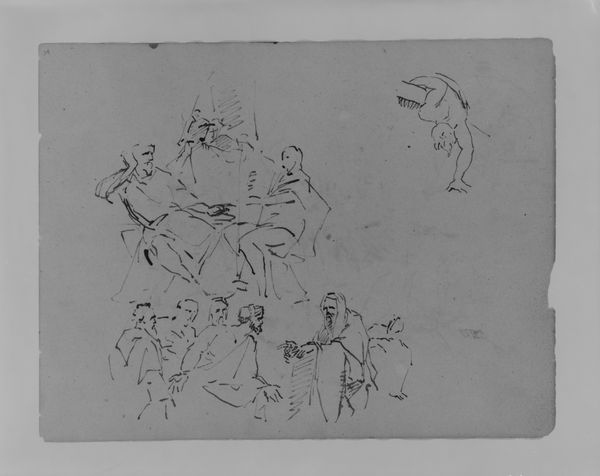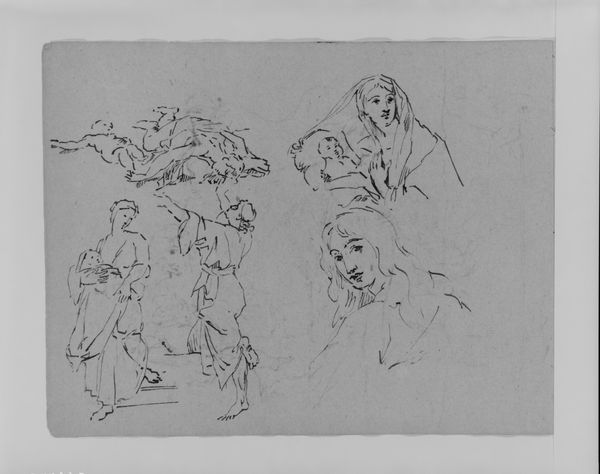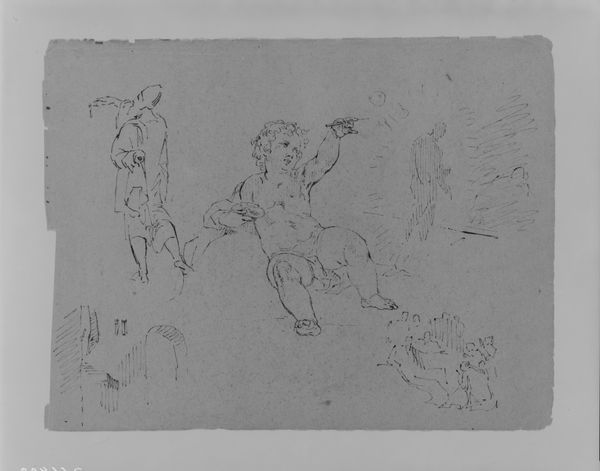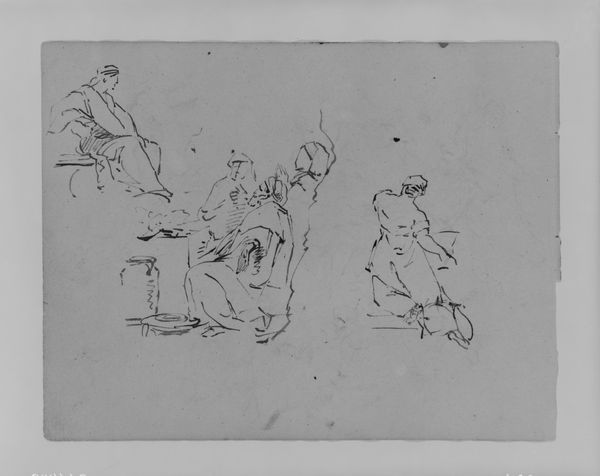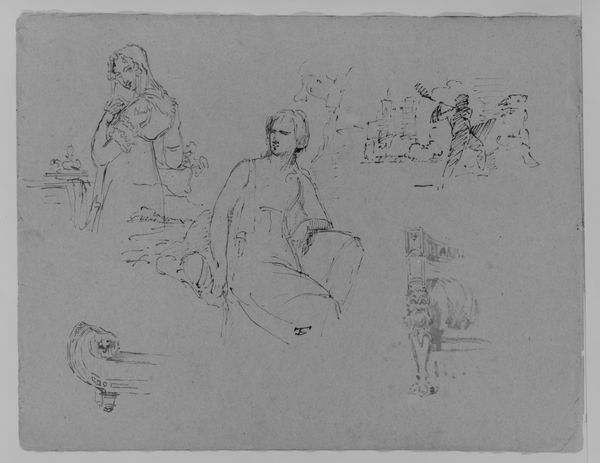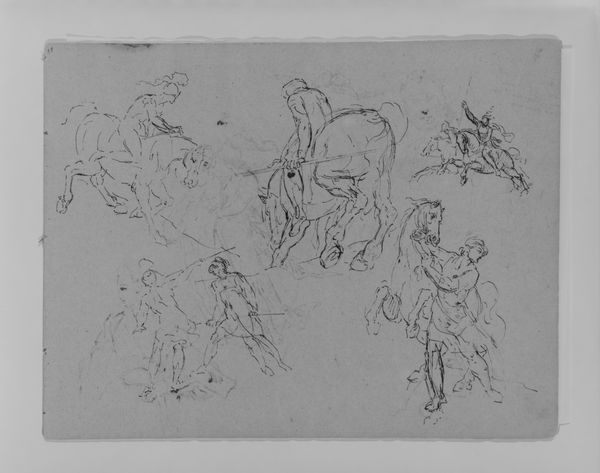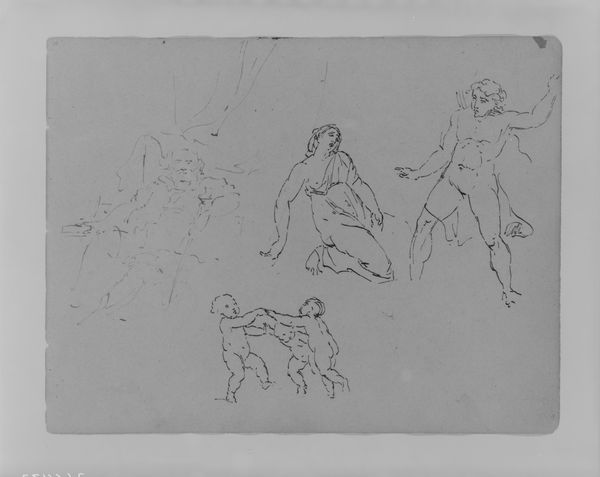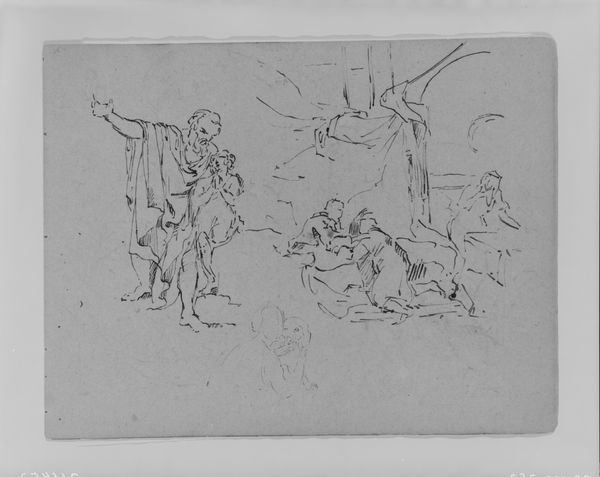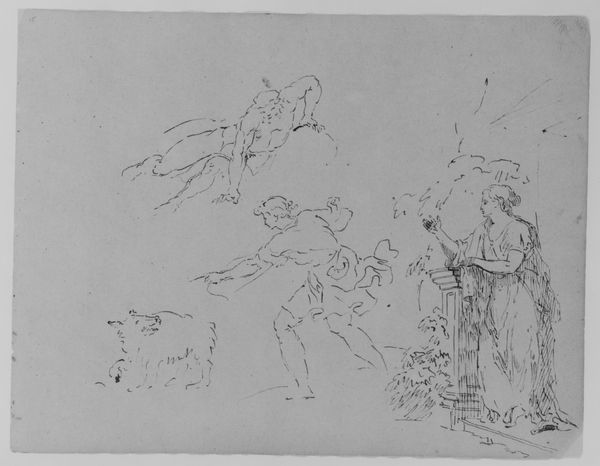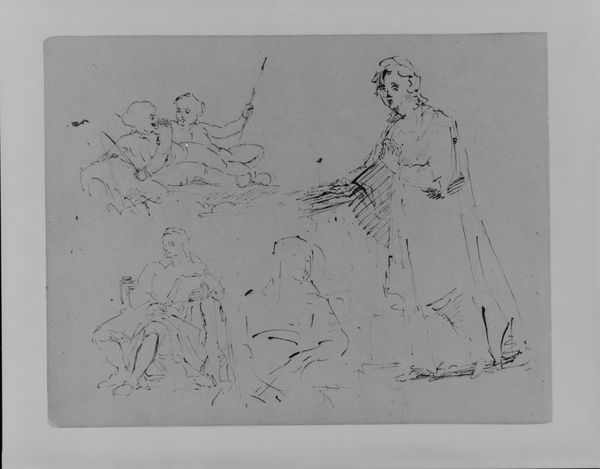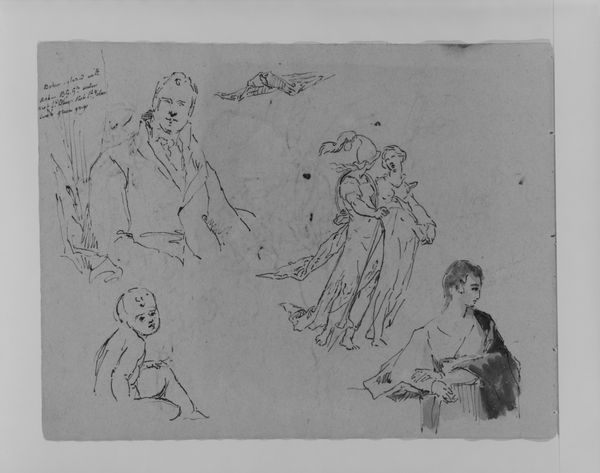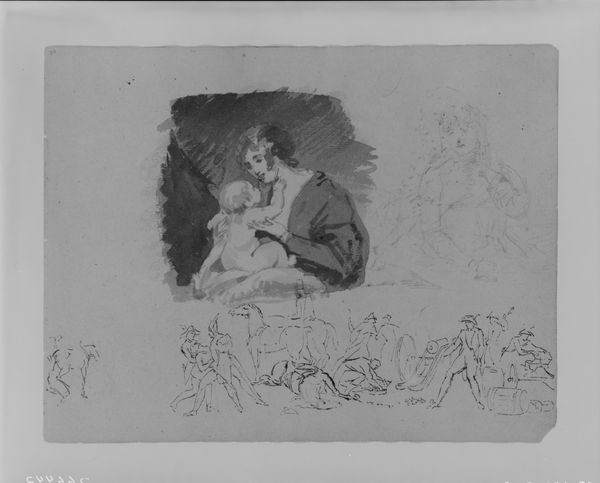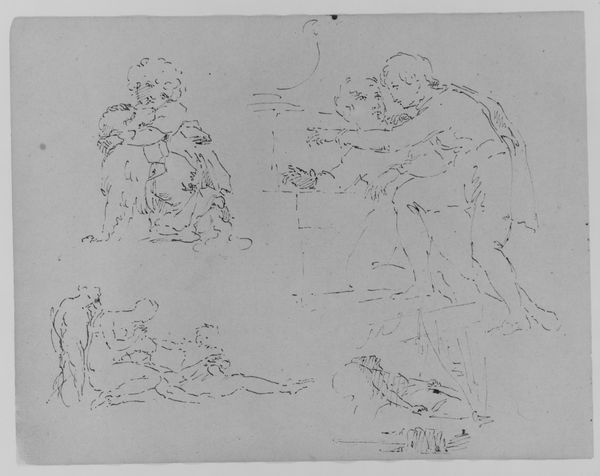
Seated Male (after Van Dyke); Soldier on Horseback; Soldiers on Horseback; Dying Figure; Soldiers on Horseback; Dead Figure; Military Scene (from Sketchbook) 1810 - 1820
0:00
0:00
drawing, paper, ink
#
portrait
#
drawing
#
caricature
#
landscape
#
figuration
#
paper
#
ink
#
soldier
#
romanticism
#
horse
#
history-painting
Dimensions: 9 x 11 1/2 in. (22.9 x 29.2 cm)
Copyright: Public Domain
Thomas Sully created this sketch, "Seated Male (after Van Dyke); Soldier on Horseback; Soldiers on Horseback; Dying Figure; Soldiers on Horseback; Dead Figure; Military Scene (from Sketchbook)," with pen and ink on paper. Sully was working in the early to mid 19th century; a time when the United States was solidifying its identity, marked by events such as the War of 1812 and the rise of nationalism. This sketchbook page gives us insight into the artist's process. The primary subject is a "Seated Male (after Van Dyke)," possibly a study or homage to the 17th-century Baroque artist, Anthony van Dyck, known for his portraits of European aristocracy. Adjacent to this figure, we see a series of military sketches, full of soldiers on horseback, dying figures, and general military action. These images, seemingly unrelated at first glance, speak to the complex relationship between power, representation, and identity. The elegant portrait style popularized by Van Dyke served to immortalize the elite, while the adjacent scenes of conflict and death remind us of the human cost often hidden behind such portrayals of power. The combination encourages us to consider whose stories are told and whose are left out.
Comments
No comments
Be the first to comment and join the conversation on the ultimate creative platform.
